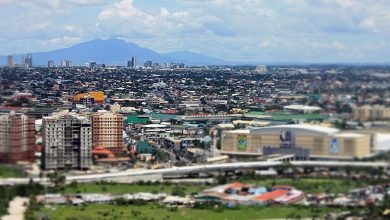Prose Writing Spanish Colonial Period
Jose Rizal (1861-96) is the greatest figure not only in the Spanish-language literature but in the history of the Philippines. He studied medicine at the University of Santo Tomas and later in Madrid, and in the course of his travels in France, Germany and Britain encountered some of the great spirits of the day. His first work in Spanish, Noli me Tangere (Touch Me Not, 1887), was historically significant and was instrument in establishing the Filipino sense of national identity. This novel brought him fame but displeased the Spaniards. His second novel El Filibusterismo (The Subversive, 1891) portrayed Philippine society with critical view. These two novels denounced Spanish abuses, and as a result when he returned to the Philippines for the second time, in 1892 he was deported to Dapitan (Mindanao). When he was on the point of leaving for Cuba as a doctor he was arrested, found guilty of treason and rebellion, and shot on 30 December 1896 though in fact his participation in the Revolution had been intellectual and literary rather than political.
Noli me Tangere novel expressed the pain of the persecuted Philippines. Juan Crisostomo Ibarra, a young progressive, returns to the Philippines after completing his studies and learned that his father has died a wretched death in prison, although he had been an honourable man, wealthy and respected. He tries to find out the truth but his enemies seek to destroy him. As a result of their intrigues his promised bride, Maria Clara seeks refuge in a convent and he himself is led to disappear mysteriously. Elias, a boatman whom Ibarra had saved from drowning, later, was able to pay his debt of gratitude. El Filibusterismo describes Ibarra’s return, under the name of Simoun, and his attempts to find Maria Clara and take vengeance on his enemies. Meanwhile, however, his fiancée has committed suicide, and his plot fails: whereupon he commits suicide in his turn.
These two novels depict the society of the period and its archetypes, particularly the evil-doing Spanish clergy. Maria Clara is an example of a girl brought up under the Spanish system. Ibarra-Simoun’s reforming zeal, which is strong but personal and self-centred, is frustrated by his excess of passion, the contrasting figure of Elias represents Rizal’s clear-sightedness, his moral strength and superiority and his dynamism.
Rizal did not confine himself to the novel, but added to his reputation with two plays, Junto al Pasig and An Autobiography, Memorias de un Estudiante de Manila . His poems proclaim his love for the suffering country which he seeks to arouse from its oppression. His essays were published in five volumes along with his correspondence, written in Spanish, German, Tagalog, French and English.
Graciano Lopez Jaena and Marcelo H. were the two writers contemporary with Rizal and fought with him in Madrid for the cause of Filipino nationalism, writing numerous articles for their propaganda journal, La Solidaridad. Marcelo H. del Pilar was popularly known as Plaridel. He tried to marshal the nationalist sentiment of the enlightened Filipino ilustrados, against Spanish imperialism using the pasyon and prayers. Monetary currency was used to describe the friar in the poem Friar Ginoong Barya (Hail Father Coins) and A Parody of Aba Ginoong Maria (Hail Mary, A Popular Prayer). Graciano Lopez Jaena becomes a leading literary and oratical spokesman for the cause of Filipino freedom.
Two other writers of the period, who made their names by historical and political writings are Pedro A. Paterno and Apolinario Mabini. Pedro A. Paterno was the author of Pacto de Biak-na-Bato (Pact of Biyak-na-Bato, 1910); the very first novel written in Tagalog, Ninay (1907); and the first Filipino collection of poems in Spanish, Sampaguitas y Poesis (Jasmines and Poems which was published in Madrid in 1880. Apolinario Mabini, known as Sublime Paralytic was a Filipino theoretician who wrote the constitution for the first Philippine Republic in 1899-1901.




